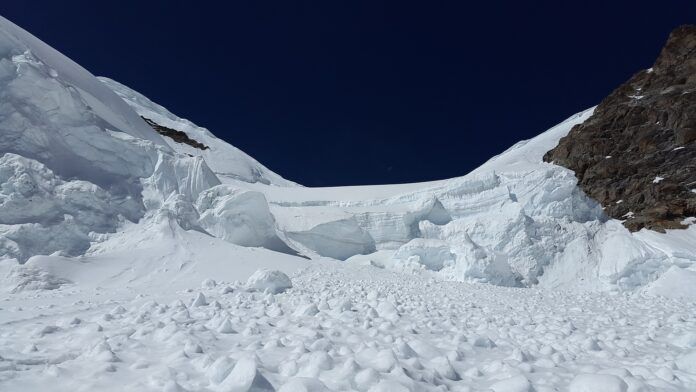Those heading out skiing and snowboarding in the backcountry are being cautioned to take extra care with a weak snowpack this season.
The warning from Avalanche Canada says a snowpack this weak is only seen every 10 to 20 years with some forecasters comparing this year’s conditions to 2003, one of the worst years for avalanche fatalities.
According to forecaster Mike Conlan, the lengthy periods of drought and cold weather experienced in B.C. this year created numerous problematic layers in the snowpack.
Conlan adds the conditions mean avalanches can be triggered by people farther away from where the avalanche actually happens.
“One commonality we’ve seen is that many of the avalanches were triggered by riders from tens to hundreds of metres away from the slope that avalanched,” wrote Conlan in a report.
“This indicates that the buried weak layers are widespread and spatially connected, meaning you could trigger the layer anywhere on or near a slope. This is known as remote triggering and is a clear sign of an unstable snowpack.”
Conlan says one of the issues in predicting the snowpack includes its depth, hiding potential clues until an avalanche is triggered.
On Vancouver Island, the forecast centre is showing considerable risk for the alpine and treeline levels with fresh snow sitting over a slab problem. However, the snowpack is slightly different.
Forecaster Julie Leblanc says while there is a crust about 60 to 80 centimetres down, it is considered a persistent problem.
“It could last for a few weeks. So, it’s not at the same level as what we can see in central B.C. but there’s still a concern on the island,” said Leblanc. “The situation in the interior could last weeks to months as opposed to the situation on the island will probably resolve in a few weeks.”
Leblanc adds the crust likely developed through lots of wet snow and rain with dropping freezing levels, and fresh snow might not bond to the crust very well.
Avalanche Canada recommends skiers and riders pick terrain with less consequence and low angles of less than 30 degrees, follow a disciplined group decision making and minimize exposure during periods of heavy loading from new snow, wind or rain.
Leblanc adds ensuring you have the correct avalanche training and gear is vital along with understanding the conditions you are entering.






